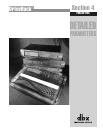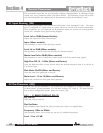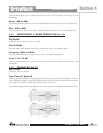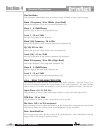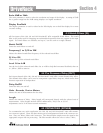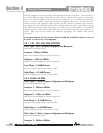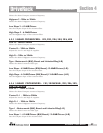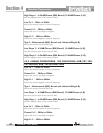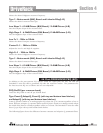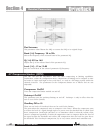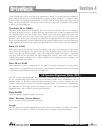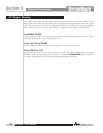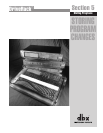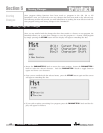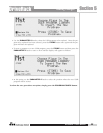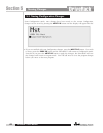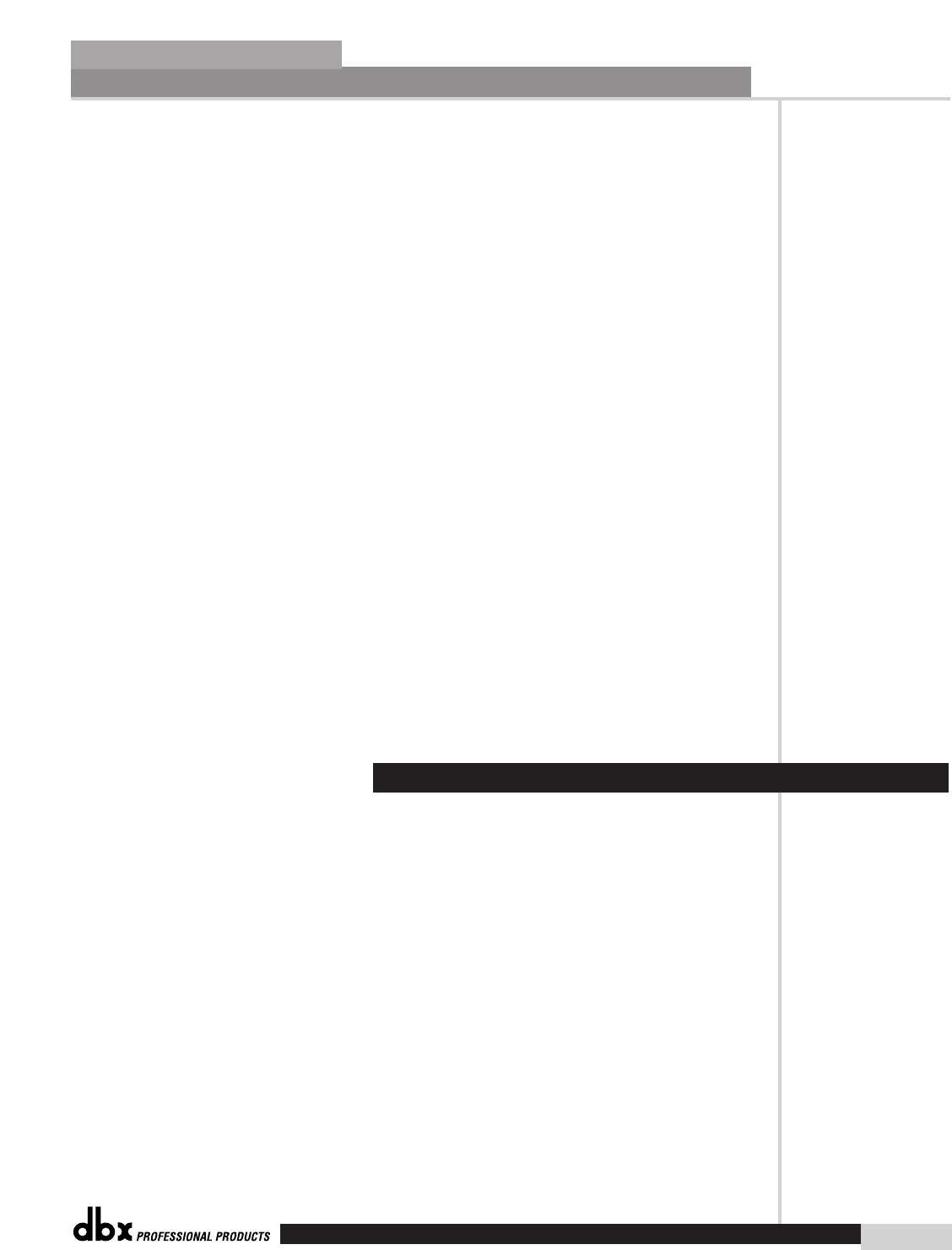
®
Detailed Parameters
Section 4
DriveRack
™
39
DriveRack™ User Manual
Selects the desired Highpass crossover frequency.
Type 2 - Butterworth (BW), Bessel and Linkwitz-Riley(L-R)
Selects the desired crossover filter type.
Low Slope 2 - 6-24dB/Octave (BW, Bessel) 12-48dB/Octave (L-R)
Sets the Lowpass slope of the crossover filter.
High Slope 2 - 6-24dB/Octave (BW, Bessel) 12-48dB/Octave (L-R)
Sets the Highpass slope of the crossover filter.
Low Fc 3 - 20Hz to 20kHz
Selects the desired Lowpass crossover frequency.
Center Fc 3 - 20Hz to 20kHz
Adjusts the Low Fc and High Fc together.
High Fc 3 - 20Hz to 20kHz
Selects the desired Highpass crossover frequency.
Type 3 - Butterworth (BW), Bessel and Linkwitz-Riley(L-R)
Selects the desired crossover filter type.
Low Slope 3 - 6-24dB/Octave (BW, Bessel) 12-48dB/Octave (L-R)
Sets the Lowpass slope of the crossover filter.
High Slope 3 - 6-24dB/Octave (BW, Bessel) 12-48dB/Octave (L-R)
Sets the Highpass slope of the crossover filter.
In addition to the pre-crossover EQ options within the signal path, the 480, 481 and 482
DriveRack™ units also offer a parametric EQ after the crossover section. The parameters for
the Post-crossover EQ are as follows and are user adjustable:
PEQ On/Off (per crossover band)
Turns the PEQ band on and off per XOVER band.
Type Const Q,Adapt Q, Const Q (with top and bottom band shelves)
and Adapt Q (with top and bottom band shelves)
Const Q operates similar to an analog graphic EQ where the Q is constant regardless of cut or
boost. Whereas, Adaptive Q, operates similar to the EQ that is found on a mixing console where
the width of the band is constant regardless of the cut or boost. The DriveRack™ units also offer
these Q type EQs with top and bottom band shelves.
The following figure shows the difference between constant and adaptive Q parametric filters.
4.6 Post-CROSSOVER PEQ (EQ)



